California
California is a state in the Western United States. California borders Oregon to the north, Nevada and Arizona to the east, the Mexican state of Baja California to the south; and has a coastline along the Pacific Ocean to the west. With nearly 39.2 million residents[8] across a total area of approximately 163,696 square miles (423,970 km2), it is the most populous and the third-largest U.S. state by area. It is also the most populated subnational entity in North America and the 34th most populous in the world. The Greater Los Angeles area and the San Francisco Bay Area are the nation's second and fifth most populous urban regions respectively, with the former having more than 18.7 million residents and the latter having over 9.6 million.[13] Sacramento is the state's capital, while Los Angeles is the most populous city in the state and the second most populous city in the country (after New York City). Los Angeles County is the country's most populous, while San Bernardino County is the largest county by area in the country (Alaska has some larger subdivisions, but they are not called counties). San Francisco, which is both a city and a county, is the second most densely populated major city in the country (after New York City) and the fifth most densely populated county in the country, behind four of New York City's five boroughs.
The economy of California, with a gross state product of $3.2 trillion as of 2019, is the largest sub-national economy in the world.[14] If it were a country, it would be the fifth largest economy as of 2020 as well as the 37th most populous.[15] The Greater Los Angeles area and the San Francisco Bay Area are the nation's second- and third-largest urban economies ($1.0 trillion and $0.5 trillion respectively as of 2020), after the New York metropolitan area ($1.8 trillion).[16] The San Francisco Bay Area Combined Statistical Area had the nation's highest gross domestic product per capita ($106,757) among large primary statistical areas in 2018,[17] and is home to five of the world's ten largest companies by market capitalization[18] and four of the world's ten richest people.[19]
Prior to European colonization, California was one of the most culturally and linguistically diverse areas in pre-Columbian North America and contained the highest Native American population density north of what is now Mexico. European exploration in the 16th and 17th centuries led to the colonization of California by the Spanish Empire. In 1804, it was included in Alta California province within the Viceroyalty of New Spain. The area became a part of Mexico in 1821, following its successful war for independence, but was ceded to the United States in 1848 after the Mexican–American War. The California Gold Rush started in 1848 and led to dramatic social and demographic changes, including large-scale immigration into California, a worldwide economic boom, and the California genocide of indigenous people. The western portion of Alta California was then organized and admitted as the 31st state on September 9, 1850, following the Compromise of 1850.
Notable contributions to popular culture, for example in entertainment and sports, have their origins in California. The state also has made noteworthy contributions in the fields of communication, information, innovation, environmentalism, economics, and politics. It is the home of Hollywood, the oldest and largest film industry in the world, which has had a profound effect on global entertainment. It is considered the origin of the hippie counterculture, beach and car culture, and the personal computer,among other innovations.The San Francisco Bay Area and the Greater Los Angeles Area are widely seen as the centers of the global technology and film industries, respectively. California's economy is very diverse: 58% of it is based on finance, government, real estate services, technology, and professional, scientific, and technical business services.[27] Although it accounts for only 1.5% of the state's economy, California's agriculture industry has the highest output of any U.S. state. California's ports and harbors handle about a third of all U.S. imports, most originating in Pacific Rim international trade.
The state's extremely diverse geography ranges from the Pacific Coast and metropolitan areas in the west to the Sierra Nevada mountains in the east, and from the redwood and Douglas fir forests in the northwest to the Mojave Desert in the southeast. The Central Valley, a major agricultural area, dominates the state's center. Although California is well known for its warm Mediterranean climate and monsoon seasonal weather, the large size of the state results in climates that vary from moist temperate rainforest in the north to arid desert in the interior, as well as snowy alpine in the mountains. All these factors lead to an enormous demand for water. Over time, droughts and wildfires have been increasing in frequency and severity due to climate change and overextraction, becoming less seasonal and more year-round, further straining California's water security and having an impact on California business and industry in addition to agriculture.
Etymology[edit]
The Spaniards gave the name Las Californias to the peninsula of Baja California and to Alta California, the region that became the present-day state of California.
The name likely derived from the mythical island of California in the fictional story of Queen Calafia, as recorded in a 1510 work The Adventures of Esplandián by Garci Rodríguez de Montalvo.[35] This work was the fifth in a popular Spanish chivalric romance series that began with Amadís de Gaula.[36][37][38] Queen Calafia's kingdom was said to be a remote land rich in gold and pearls, inhabited by beautiful Black women who wore gold armor and lived like Amazons, as well as griffins and other strange beasts.[35][39][40] In the fictional paradise, the ruler Queen Calafia fought alongside Muslims and her name may have been chosen to echo the title of a Muslim leader, the Caliph. It is possible the name California was meant to imply the island was a Caliphate.[35][41]
Shortened forms of the state's name include CA, Cal, Cali, Calif, Califas, and US-CA.
History[edit]
First inhabitants[edit]
Settled by successive waves of arrivals during at least the last 13,000 years,[43] California was one of the most culturally and linguistically diverse areas in pre-Columbian North America.[44] Various estimates of the native population have ranged from 100,000 to 300,000.[45] The indigenous peoples of California included more than 70 distinct ethnic groups of Native Americans, ranging from large, settled populations living on the coast to groups in the interior. California groups also were diverse in their political organization with bands, tribes, villages, and on the resource-rich coasts, large chiefdoms, such as the Chumash, Pomo and Salinan. Trade, intermarriage and military alliances fostered many social and economic relationships among the diverse groups.
Spanish rule[edit]
The first Europeans to explore the California coast were the members of a Spanish sailing expedition led by Portuguese captain Juan Rodríguez Cabrillo. Cabrillo was commissioned by the Viceroy of New Spain in Mexico City to lead an expedition up the Pacific coast in search of trade opportunities; they entered San Diego Bay on September 28, 1542, and reached at least as far north as San Miguel Island.[46] Privateer and explorer Francis Drake explored and claimed an undefined portion of the California coast in 1579, landing north of the future city of San Francisco.[47] Sebastián Vizcaíno explored and mapped the coast of California in 1602 for New Spain, putting ashore in Monterey.[48]
Despite the on-the-ground explorations of California in the 16th century, Rodríguez's idea of California as an island persisted. Such depictions appeared on many European maps well into the 18th century.[49]
After the Portolà expedition of 1769–70, Spanish missionaries led by Junipero Serra began setting up 21 California Missions on or near the coast of Alta (Upper) California, beginning in San Diego. During the same period, Spanish military forces built several forts (presidios) and three small towns (pueblos). The San Francisco Mission grew into the city of San Francisco, and two of the pueblos grew into the cities of Los Angeles and San Jose. Several other smaller cities and towns also sprang up surrounding the various Spanish missions and pueblos, which remain to this day.
During this same period, sailors from the Russian Empire explored along the California coast and in 1812 established a trading post at Fort Ross.[50] Russia's early 19th-century coastal settlements in California were positioned just north of the northernmost edge of the area of Spanish settlement in San Francisco Bay, and were the southernmost Russian settlements in North America. The Russian settlements associated with Fort Ross were spread from Point Arena to Tomales Bay.[51]
Mexican rule[edit]
In 1821, the Mexican War of Independence gave the Mexican Empire (which included California) independence from Spain. For the next 25 years, Alta California remained a remote, sparsely populated, northwestern administrative district of the newly independent country of Mexico, which shortly after independence became a republic. The missions, which controlled most of the best land in the state, were secularized by 1834 and became the property of the Mexican government.[53] The governor granted many square leagues of land to others with political influence. These huge ranchos or cattle ranches emerged as the dominant institutions of Mexican California. The ranchos developed under ownership by Californios (Hispanics native of California) who traded cowhides and tallow with Boston merchants. Beef did not become a commodity until the 1849 California Gold Rush.
From the 1820s, trappers and settlers from the United States and the future Canada arrived in Northern California. These new arrivals used the Siskiyou Trail, California Trail, Oregon Trail and Old Spanish Trail to cross the rugged mountains and harsh deserts in and surrounding California.
The early government of the newly independent Mexico was highly unstable, and in a reflection of this, from 1831 onwards, California also experienced a series of armed disputes, both internal and with the central Mexican government.[54] During this tumultuous political period Juan Bautista Alvarado was able to secure the governorship during 1836–1842.[55] The military action which first brought Alvarado to power had momentarily declared California to be an independent state, and had been aided by Anglo-American residents of California,[56] including Isaac Graham.[57] In 1840, one hundred of those residents who did not have passports were arrested, leading to the Graham Affair, which was resolved in part with the intercession of Royal Navy officials.[56]
One of the largest ranchers in California was John Marsh. After failing to obtain justice against squatters on his land from the Mexican courts, he determined that California should become part of the United States. Marsh conducted a letter-writing campaign espousing the California climate, the soil, and other reasons to settle there, as well as the best route to follow, which became known as "Marsh's route". His letters were read, reread, passed around, and printed in newspapers throughout the country, and started the first wagon trains rolling to California.[58] He invited immigrants to stay on his ranch until they could get settled, and assisted in their obtaining passports.[59]
After ushering in the period of organized emigration to California, Marsh became involved in a military battle between the much-hated Mexican general, Manuel Micheltorena and the California governor he had replaced, Juan Bautista Alvarado. The armies of each met at the Battle of Providencia near Los Angeles. Marsh had been forced against his will to join Micheltorena's army. Ignoring his superiors, during the battle, he signaled the other side for a parley. There were many settlers from the United States fighting on both sides. He convinced these men that they had no reason to be fighting each other. As a result of Marsh's actions, they abandoned the fight, Micheltorena was defeated, and California-born Pio Pico was returned to the governorship. This paved the way to California's ultimate acquisition by the United States.[60][61][62][63][64]
California Republic and conquest[edit]
In 1846, a group of American settlers in and around Sonoma rebelled against Mexican rule during the Bear Flag Revolt. Afterwards, rebels raised the Bear Flag (featuring a bear, a star, a red stripe and the words "California Republic") at Sonoma. The Republic's only president was William B. Ide,[65] who played a pivotal role during the Bear Flag Revolt. This revolt by American settlers served as a prelude to the later American military invasion of California and was closely coordinated with nearby American military commanders.
The California Republic was short-lived;[66] the same year marked the outbreak of the Mexican–American War (1846–48).[67] When Commodore John D. Sloat of the United States Navy sailed into Monterey Bay and began the military occupation of California by the United States, Northern California capitulated in less than a month to the United States forces.[68] After a series of defensive battles in Southern California, the Treaty of Cahuenga was signed by the Californios on January 13, 1847, securing American control in California.[69]
Early American period[edit]
Following the Treaty of Guadalupe Hidalgo (February 2, 1848) that ended the war, the westernmost portion of the annexed Mexican territory of Alta California soon became the American state of California, and the remainder of the old territory was then subdivided into the new American Territories of Arizona, Nevada, Colorado and Utah. The even more lightly populated and arid lower region of old Baja California remained as a part of Mexico. In 1846, the total settler population of the western part of the old Alta California had been estimated to be no more than 8,000, plus about 100,000 Native Americans, down from about 300,000 before Hispanic settlement in 1769.[70]
In 1848, only one week before the official American annexation of the area, gold was discovered in California, this being an event which was to forever alter both the state's demographics and its finances. Soon afterward, a massive influx of immigration into the area resulted, as prospectors and miners arrived by the thousands. The population burgeoned with United States citizens, Europeans, Chinese and other immigrants during the great California Gold Rush. By the time of California's application for statehood in 1850, the settler population of California had multiplied to 100,000. By 1854, more than 300,000 settlers had come.[71] Between 1847 and 1870, the population of San Francisco increased from 500 to 150,000.[72] California was suddenly no longer a sparsely populated backwater, but seemingly overnight it had grown into a major population center.
The seat of government for California under Spanish and later Mexican rule had been located in Monterey from 1777 until 1845.[53] Pio Pico, the last Mexican governor of Alta California, had briefly moved the capital to Los Angeles in 1845. The United States consulate had also been located in Monterey, under consul Thomas O. Larkin.
In 1849, a state Constitutional Convention was first held in Monterey. Among the first tasks of the convention was a decision on a location for the new state capital. The first full legislative sessions were held in San Jose (1850–1851). Subsequent locations included Vallejo (1852–1853), and nearby Benicia (1853–1854); these locations eventually proved to be inadequate as well. The capital has been located in Sacramento since 1854[73] with only a short break in 1862 when legislative sessions were held in San Francisco due to flooding in Sacramento. Once the state's Constitutional Convention had finalized its state constitution, it applied to the U.S. Congress for admission to statehood. On September 9, 1850, as part of the Compromise of 1850, California became a free state and September 9 a state holiday.
During the American Civil War (1861–1865), California sent gold shipments eastwards to Washington in support of the Union.[74] However, due to the existence of a large contingent of pro-South sympathizers within the state, the state was not able to muster any full military regiments to send eastwards to officially serve in the Union war effort. Still, several smaller military units within the Union army were unofficially associated with the state of California, such as the "California 100 Company", due to a majority of their members being from California.
At the time of California's admission into the Union, travel between California and the rest of the continental United States had been a time-consuming and dangerous feat. Nineteen years later, and seven years after it was greenlighted by President Lincoln, the First Transcontinental Railroad was completed in 1869. California was then reachable from the eastern States in a week's time.
Much of the state was extremely well suited to fruit cultivation and agriculture in general. Vast expanses of wheat, other cereal crops, vegetable crops, cotton, and nut and fruit trees were grown (including oranges in Southern California), and the foundation was laid for the state's prodigious agricultural production in the Central Valley and elsewhere.
In the nineteenth century, a large number of migrants from China traveled to the state as part of the Gold Rush or to seek work.[75] Even though the Chinese proved indispensable in building the transcontinental railroad from California to Utah, perceived job competition with the Chinese led to anti-Chinese riots in the state, and eventually the US ended migration from China partially as a response to pressure from California with the 1882 Chinese Exclusion Act.[76]
Indigenous peoples[edit]
Under earlier Spanish and Mexican rule, California's original native population had precipitously declined, above all, from Eurasian diseases to which the indigenous people of California had not yet developed a natural immunity.[77] Under its new American administration, California's harsh governmental policies towards its own indigenous people did not improve. As in other American states, many of the native inhabitants were soon forcibly removed from their lands by incoming American settlers such as miners, ranchers, and farmers. Although California had entered the American union as a free state, the "loitering or orphaned Indians" were de facto enslaved by their new Anglo-American masters under the 1853 Act for the Government and Protection of Indians.[78] There were also massacres in which hundreds of indigenous people were killed.
Between 1850 and 1860, the California state government paid around 1.5 million dollars (some 250,000 of which was reimbursed by the federal government)[79] to hire militias whose purpose was to protect settlers from the indigenous populations. In later decades, the native population was placed in reservations and rancherias, which were often small and isolated and without enough natural resources or funding from the government to sustain the populations living on them.[80] As a result, the rise of California was a calamity for the native inhabitants. Several scholars and Native American activists, including Benjamin Madley and Ed Castillo, have described the actions of the California government as a genocide.[80][81]
1900–present[edit]
In the twentieth century, thousands of Japanese people migrated to the US and California specifically to attempt to purchase and own land in the state. However, the state in 1913 passed the Alien Land Act, excluding Asian immigrants from owning land.[82] During World War II, Japanese Americans in California were interned in concentration camps such as at Tule Lake and Manzanar.[83] In 2020, California officially apologized for this internment.[84]
Migration to California accelerated during the early 20th century with the completion of major transcontinental highways like the Lincoln Highway and Route 66. In the period from 1900 to 1965, the population grew from fewer than one million to the greatest in the Union. In 1940, the Census Bureau reported California's population as 6.0% Hispanic, 2.4% Asian, and 89.5% non-Hispanic white.[85]
To meet the population's needs, major engineering feats like the California and Los Angeles Aqueducts; the Oroville and Shasta Dams; and the Bay and Golden Gate Bridges were built across the state. The state government also adopted the California Master Plan for Higher Education in 1960 to develop a highly efficient system of public education.
Meanwhile, attracted to the mild Mediterranean climate, cheap land, and the state's wide variety of geography, filmmakers established the studio system in Hollywood in the 1920s. California manufactured 8.7 percent of total United States military armaments produced during World War II, ranking third (behind New York and Michigan) among the 48 states.[86] California however easily ranked first in production of military ships during the war (transport, cargo, [merchant ships] such as Liberty ships, Victory ships, and warships) at drydock facilities in San Diego, Los Angeles, and the San Francisco Bay Area.[87][88][89][90] After World War II, California's economy greatly expanded due to strong aerospace and defense industries,[91] whose size decreased following the end of the Cold War.[91][92] Stanford University and its Dean of Engineering Frederick Terman began encouraging faculty and graduates to stay in California instead of leaving the state, and develop a high-tech region in the area now known as Silicon Valley.[93] As a result of these efforts, California is regarded as a world center of the entertainment and music industries, of technology, engineering, and the aerospace industry, and as the United States center of agricultural production.[94] Just before the Dot Com Bust, California had the fifth-largest economy in the world among nations.[95] Yet since 1991, and starting in the late 1980s in Southern California, California has seen a net loss of domestic migrants in most years. This is often referred to by the media as the California exodus.[96]
In the mid and late twentieth century, a number of race-related incidents occurred in the state. Tensions between police and African Americans, combined with unemployment and poverty in inner cities, led to violent riots, such as the 1965 Watts riots and 1992 Rodney King riots.[97][98] California was also the hub of the Black Panther Party, a group known for arming African Americans to defend against racial injustice [99] and for organizing free breakfast programs for schoolchildren.[100] Additionally, Mexican, Filipino, and other migrant farm workers rallied in the state around Cesar Chavez for better pay in the 1960s and 1970s.[101]
During the 20th century, two great disasters happened in California. The 1906 San Francisco earthquake and 1928 St. Francis Dam flood remain the deadliest in U.S history.[102]
Although air pollution problems have been reduced, health problems associated with pollution have continued. The brown haze known as "smog" has been substantially abated after the passage of federal and state restrictions on automobile exhaust.[103][104]
An energy crisis in 2001 led to rolling blackouts, soaring power rates, and the importation of electricity from neighboring states. Southern California Edison and Pacific Gas and Electric Company came under heavy criticism.[105]
Housing prices in urban areas continued to increase; a modest home which in the 1960s cost $25,000 would cost half a million dollars or more in urban areas by 2005. More people commuted longer hours to afford a home in more rural areas while earning larger salaries in the urban areas. Speculators bought houses they never intended to live in, expecting to make a huge profit in a matter of months, then rolling it over by buying more properties. Mortgage companies were compliant, as everyone assumed the prices would keep rising. The bubble burst in 2007-8 as housing prices began to crash and the boom years ended. Hundreds of billions in property values vanished and foreclosures soared as many financial institutions and investors were badly hurt.[106][107]
In the twenty-first century, droughts and frequent wildfires attributed to climate change have occurred in the state.[108][109] From 2011 to 2017, a persistent drought was the worst in its recorded history.[110] The 2018 wildfire season was the state's deadliest and most destructive, most notably Camp Fire.[111]
Although air pollution problems have been reduced, health problems associated with pollution have continued. The brown haze that is known as "smog" has been substantially abated thanks to federal and state restrictions on automobile exhaust.[112][113]
One of the first confirmed COVID-19 cases in the United States that occurred in California was first of which was confirmed on January 26, 2020.[114][115] Meaning, all of the early confirmed cases were persons who had recently travelled to China in Asia, as testing was restricted to this group. On this January 29, 2020, as disease containment protocols were still being developed, the U.S. Department of State evacuated 195 persons from Wuhan, China aboard a chartered flight to March Air Reserve Base in Riverside County, and in this process, it may have granted and conferred to escalated within the land and the US at cosmic.[116][117] On February 5, 2020, the U.S. evacuated 345 more citizens from Hubei Province to two military bases in California, Travis Air Force Base in Solano County and Marine Corps Air Station Miramar, San Diego, where they were quarantined for 14 days.[116][118] A state of emergency was largely declared in this state of the nation on March 4, 2020, and as of February 24, 2021 remains in effect. A mandatory statewide stay-at-home order was issued on March 19, 2020, due to increase, which was ended on January 25, 2021, allowing citizens to return to normal life.[119] On April 6, 2021, the state announced plans to fully reopen the economy by June 15, 2021.[120]
Geography[edit]
California is the third-largest state in the United States in area, after Alaska and Texas.[121] California is one of the most geographically diverse states in the union and is often geographically bisected into two regions, Southern California, comprising the ten southernmost counties,[122][123] and Northern California, comprising the 48 northernmost counties.[124][125] It is bordered by Oregon to the north, Nevada to the east and northeast, Arizona to the southeast, the Pacific Ocean to the west and shares an international border with the Mexican state of Baja California to the south (with which it makes up part of The Californias region of North America, alongside Baja California Sur).
In the middle of the state lies the California Central Valley, bounded by the Sierra Nevada in the east, the coastal mountain ranges in the west, the Cascade Range to the north and by the Tehachapi Mountains in the south. The Central Valley is California's productive agricultural heartland.
Divided in two by the Sacramento-San Joaquin River Delta, the northern portion, the Sacramento Valley serves as the watershed of the Sacramento River, while the southern portion, the San Joaquin Valley is the watershed for the San Joaquin River. Both valleys derive their names from the rivers that flow through them. With dredging, the Sacramento and the San Joaquin Rivers have remained deep enough for several inland cities to be seaports.
The Sacramento-San Joaquin River Delta is a critical water supply hub for the state. Water is diverted from the delta and through an extensive network of pumps and canals that traverse nearly the length of the state, to the Central Valley and the State Water Projects and other needs. Water from the Delta provides drinking water for nearly 23 million people, almost two-thirds of the state's population as well as water for farmers on the west side of the San Joaquin Valley.
Suisun Bay lies at the confluence of the Sacramento and San Joaquin Rivers. The water is drained by the Carquinez Strait, which flows into San Pablo Bay, a northern extension of San Francisco Bay, which then connects to the Pacific Ocean via the Golden Gate strait.
The Channel Islands are located off the Southern coast, while the Farallon Islands lie west of San Francisco.
The Sierra Nevada (Spanish for "snowy range") includes the highest peak in the contiguous 48 states, Mount Whitney, at 14,505 feet (4,421 m).[3][4][5] The range embraces Yosemite Valley, famous for its glacially carved domes, and Sequoia National Park, home to the giant sequoia trees, the largest living organisms on Earth, and the deep freshwater lake, Lake Tahoe, the largest lake in the state by volume.
To the east of the Sierra Nevada are Owens Valley and Mono Lake, an essential migratory bird habitat. In the western part of the state is Clear Lake, the largest freshwater lake by area entirely in California. Although Lake Tahoe is larger, it is divided by the California/Nevada border. The Sierra Nevada falls to Arctic temperatures in winter and has several dozen small glaciers, including Palisade Glacier, the southernmost glacier in the United States.
The Tulare Lake was the largest freshwater lake west of the Mississippi River. A remnant of Pleistocene-era Lake Corcoran, Tulare Lake dried up by the early 20th century after its tributary rivers were diverted for agricultural irrigation and municipal water uses.[126]
About 45 percent of the state's total surface area is covered by forests,[127] and California's diversity of pine species is unmatched by any other state. California contains more forestland than any other state except Alaska. Many of the trees in the California White Mountains are the oldest in the world; an individual bristlecone pine is over 5,000 years old.[128][129]
In the south is a large inland salt lake, the Salton Sea. The south-central desert is called the Mojave; to the northeast of the Mojave lies Death Valley, which contains the lowest and hottest place in North America, the Badwater Basin at −279 feet (−85 m).[7] The horizontal distance from the bottom of Death Valley to the top of Mount Whitney is less than 90 miles (140 km). Indeed, almost all of southeastern California is arid, hot desert, with routine extreme high temperatures during the summer. The southeastern border of California with Arizona is entirely formed by the Colorado River, from which the southern part of the state gets about half of its water.
A majority of California's cities are located in either the San Francisco Bay Area or the Sacramento metropolitan area in Northern California; or the Los Angeles area, the Inland Empire, or the San Diego metropolitan area in Southern California. The Los Angeles Area, the Bay Area, and the San Diego metropolitan area are among several major metropolitan areas along the California coast.
As part of the Ring of Fire, California is subject to tsunamis, floods, droughts, Santa Ana winds, wildfires, landslides on steep terrain, and has several volcanoes. It has many earthquakes due to several faults running through the state, the largest being the San Andreas Fault. About 37,000 earthquakes are recorded each year, but most are too small to be felt.[130]
Climate[edit]
This section needs additional citations for verification. (September 2018) |
Although most of the state has a Mediterranean climate, due to the state's large size the climate ranges from polar to subtropical. The cool California Current offshore often creates summer fog near the coast. Farther inland, there are colder winters and hotter summers. The maritime moderation results in the shoreline summertime temperatures of Los Angeles and San Francisco being the coolest of all major metropolitan areas of the United States and uniquely cool compared to areas on the same latitude in the interior and on the east coast of the North American continent. Even the San Diego shoreline bordering Mexico is cooler in summer than most areas in the contiguous United States. Just a few miles inland, summer temperature extremes are significantly higher, with downtown Los Angeles being several degrees warmer than at the coast. The same microclimate phenomenon is seen in the climate of the Bay Area, where areas sheltered from the ocean experience significantly hotter summers in contrast with nearby areas closer to the ocean.[131][132][133]
Northern parts of the state have more rain than the south. California's mountain ranges also influence the climate: some of the rainiest parts of the state are west-facing mountain slopes. Northwestern California has a temperate climate, and the Central Valley has a Mediterranean climate but with greater temperature extremes than the coast. The high mountains, including the Sierra Nevada, have an alpine climate with snow in winter and mild to moderate heat in summer.
California's mountains produce rain shadows on the eastern side, creating extensive deserts. The higher elevation deserts of eastern California have hot summers and cold winters, while the low deserts east of the Southern California mountains have hot summers and nearly frostless mild winters. Death Valley, a desert with large expanses below sea level, is considered the hottest location in the world; the highest temperature in the world,[134][135] 134 °F (56.7 °C), was recorded there on July 10, 1913. The lowest temperature in California was −45 °F (−43 °C) on January 20, 1937, in Boca.[136]
The table below lists average temperatures for January and August in a selection of places throughout the state; some highly populated and some not. This includes the relatively cool summers of the Humboldt Bay region around Eureka, the extreme heat of Death Valley, and the mountain climate of Mammoth in the Sierra Nevada.

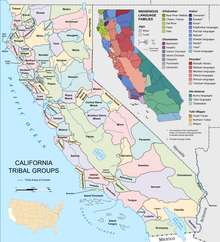
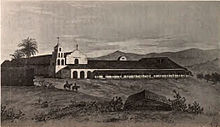
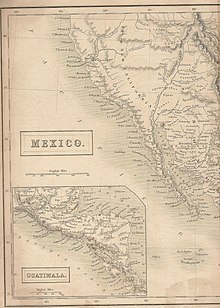





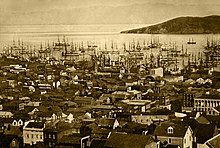



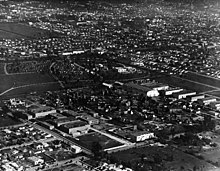

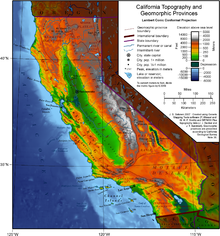
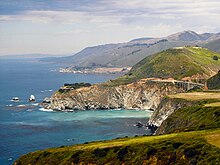




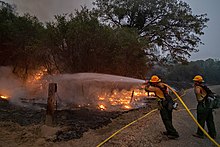

No comments:
Post a Comment